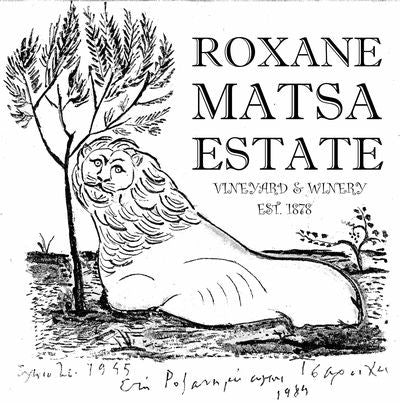Our History
From the Estate's archives (written by Andreas Cambas - free translation):
Me, Andreas Cambas, I rented from the State, in 1869, the lands of the "Kaisariani monastery" previously used only for grassing (livestock farming), because this land is rocky, not suitable for growing wheat. But, among these pieces of land, there were also some areas (the area then and today called "Palaiopanagia"), were vines were cultivated, according to the monk's system (not in stright lines), the way it is all over Attica. Production was 12.000 ounces. As I have studied agriculture and particulalry the Attican soil, I came to the conclusion that this land was suitable for vine growing and decided not to grow wheat as everybody did in Attica at that time. (...)
And since my contract with the State, that I had to return the land the way it was (meaning in its current state) I decided to try and buy land. Thus, on March 22nd, 1875, I bought 5.000.000 sq.m. (...). On the 10th of May 1878, with my brothers, Aggelos, Alexander and Alkiviadis, we bought from Duke Loumba and Duke Brain, another 3.500.000 sq.m.(.....)

Immediately after aquiring this land, I started cultivating vines and other farmers around my land, started the same, immitating my plan and method. Production rose considerably, so I started thinking what to do with it. At the beginning, I thought making wine in large scale, however due to lack of means, it was not easy. In the meantime, I was selling the grape must to markets all over Athens and Piraeus.(...)

Production in 1889 was so big, the price of must had dropped to minimum. (...) so, I thought I brought from Bordeau, France, equipment for distillation and immediately started distiing my last year's wine. All my friends and relatives thought I was mentally ill. They were sure I was going to fail and go bankrupt. (...)

I continued operating my distillery, storing my production in a barn. After 8 whole years (at 1888), I sent samples to some doctors, friends of mine, who urged me to send samples to the commander of the doctors in the Greek military. Dr. Soutsos (we have a street named after him in Athens), invited professors Tzinis and Karamitsas, chemists and wine makers of the King of Greece, Otto. Doctor Soutsos and his friends came to Kantza, tasted my samples and on the spot, he ordered 2.000 bottles for the Greek army (...).

In December 1889, I became official supplier of the Greek Crown, while my products were sent to many exhibitions and won prizes. My products were consumed now from many people, and I decided to make new investment for new storage facilities and equipment. I created two factories, one at Kantza and one in Giallou. (....)

In 1880, I traveled personally to Egypt and then to Syria, Asia minor, Konstantinople (today Istanbul) Russia, Romania, Bulgaria, in order to promote my products. My product was received with enthousiasm and the Greek communities in these coutries, helped me a lot, especially in the country of the Pharao (...)

in 1904, with my Cognac (then it was allowed to use the term) selling well all over the world, and after my son Panagiotis came back from his studies in wine-making, I thought I started wine production, since I had all means necessary, the production, the facilities and the scientific knowlegde. But, I noticed that my facilities were not at all sufficient and in 1904 and 1905, I made another investment, of 230.000 drachmas (Greek currency before euro)(...)
Production began with Retsina (type of wine with resin). White and red wines were aged for 3 years in my storage, thus I started selling them in 1907....
The history of the Brand continues throughout the 20th century.

Roxane Matsa, was somehow destined to follow her family heritage and tradition and in 1976, started her own vineyard. Her Estate, is part of the original land her grandfathers had aquired and cultivated for 150 years, here in Kantza.

